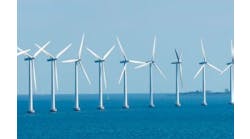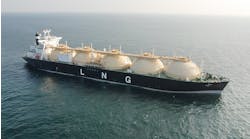Eldon Ball • Houston
In a global survey of oil and gas executives, GL Noble Denton, a consulting and engineering company based in Hamburg, Germany, collected the opinions and forecasts of a broad scope of industry CEOs and upper management. Respondents included operators such as Chevron, Royal Dutch Shell, Marathon, Statoil, Eni, Repsol, Reliance Exploration and Production, Saudi Aramco, and institutions such as Morgan Stanley and the American Petroleum Institute.
As might be expected, a good part of the survey results were predictable – more technical and geographic challenges, regulatory changes ahead, the growing role of national oil companies, increasing opportunities in Asia, etc.
Others, however, give us a window into the expectations – and concerns – of our industry leaders. Some results were surprising.
For example, when asked if their company planned to increase or decrease the frequency or intensity of its exploration activities over the next 12 months, a surprising 31% said they didn't know. There might be any number of reasons for such uncertainty – drilling rig access, pending government approvals, cash flow and budget constraints – but it seems telling nonetheless that a full third of the industry is doubtful of what it will spend on exploration.
Other responses were: significantly increase, 13%; somewhat increase, 26%; stay the same, 23%; somewhat decrease, 4%; and significantly decrease, 3%.
Asked which region of the world offered the greatest opportunity in terms of revenue growth, Southeast Asia scored highest at 32%, with North America next at 30%, and the Middle East/North Africa close behind at 29%. The Arctic was dead last at 1%.
Regarding future challenges, the respondents named rising operating costs (including insurance premiums) as their top concern. Second was increasing regulation, followed by competitors, limited new areas for exploration, and shortage of skilled labor, in that order.
Asked to rate their company's reserves replacement outlook, 7% said it would improve significantly, 32% expected it to somewhat improve and 26% thought it would stay the same. Only 2% thought it would decline significantly, while 7% said it would decline somewhat. Uncertainty showed itself again, however, as 26% said they didn't know or it wasn't applicable.
Another surprising response came when the respondents were asked what would be the most favorable regulatory environment to operate in. The US scored highest at 11% – who would have imagined – followed by China at 8%, then Brazil, India, Australia, Iraq, Saudi Arabia, Canada, Mexico, and Nigeria. For those who just can't stand suspense, the others ranked in descending order were Angola, Czech Republic, Malaysia, Norway, Colombia, Russia, UAE, UK, Argentina, Bahrain, Chad, Equatorial Guinea, Kazakhstan, Kuwait, Libya, New Zealand, Pakistan, Philippines, and last of all, Qatar.
INOCs as competitors, partners
Among the emerging trends spotted by the corporate leaders surveyed by GL Noble Denton was the move toward internationalizing national oil companies (INOCs).
"The new breed of Asian internationalizing NOCs – or INOCs – have emerged as disruptive competitors over the past two years," the report notes. "Companies such as PetroChina and Petronas boast healthy cash flows, self-sufficient integrated operations, and already operate in a similar way to the IOCs. These new market entrants have created consternation for NOCs and IOCs alike."
The report points out that Asian NOCs made significant inroads in Iraq's upstream bid rounds in 2009 and 2010, confirming their status as direct competitors with IOCs for some of the most prized hydrocarbons assets. These NOCs have an explicit mandate to develop international resources to meet domestic needs. The INOCs are cooperating with other IOCs, chiefly in projects where innovation, cost management, and risk sharing are the key factors.
The report cites BP's link-up with CNPC (PetroChina's parent) in Iraq's Rumaila field development as a case in point, as well as Shell's link with Petronas, which stretches from Egypt to Iraq and Malaysia. "Shell is already active with many NOCs," the report quotes Simon Henry, CFO, Royal Dutch Shell Sadad Husseini, as saying. "Our business model is built around creating opportunities to connect resource producers with attractive markets. We have significant joint-venture interests with Saudi Aramco, Gazprom, CNPC, and Qatar Petroleum, in addition to most other NOCs. Strong partnerships are essential to develop the long-term investment projects…and this trend will continue."
The logic of these partnerships is seen as compelling, and the report quotes Jay Pryor, vice-president for corporate business development at Chevron: "A lot of IOCs and NOCs are starting to recognize the value of risk mitigation through partnership. You push off the risks onto other parties outside of that venture."
While there are opportunities, IOCs' risks are rising and their contribution is changing in style and content, the report states.
"Some state-backed oil companies, such as Abu Dhabi's Mubadala, the sponsor of the Dolphin natural gas pipeline from Qatar to the UAE, see the future in ‘government-to-government' deals that tie in infrastructure elements, such as power plants, water facilities, and roads," they report.
Produced water treatment
MyCelx, which specializes in produced water treatment both onshore and offshore for discharge to very low discharge limit, has signed a contract with Chevron USA Inc. to design and deliver a produced water treatment system for the Jack/St. Malo floating production facility in deepwater Gulf of Mexico that will remove oil and water soluble organics (WSO) to below 10 parts per million (ppm).
The design requirements for the Jack/St. Malo floating production facility calls for an overboard discharge limit that is lower than the current EPA limit of 29 ppm, and MyCelx says it can provide that technology.
Offshore Articles Archives
View Oil and Gas Articles on PennEnergy.com




